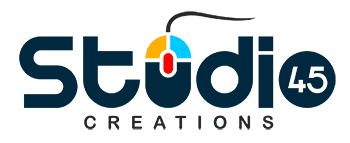One issue still baffles marketers and business owners alike in the ever-evolving realm of digital marketing: should you invest in paid marketing or organic marketing? Finding the ideal blend between sponsored and organic approaches is more important than ever as 2025 brings fresh trends, techniques, and consumer habits into the mix.
Your choice will affect your reach, engagement, and return on investment—regardless of your size, whether you’re a start-up, a developing brand, or a major corporation. This all-inclusive guide will go over the differences between paid and organic marketing, the advantages and drawbacks of both, and how to make wise investments that align with your company’s 2025 objectives.
Paid Marketing: What Is It?
Paid marketing refers to advertising techniques whereby companies pay to show their content to a specific audience. The goal is to generate clicks, conversions, and visibility through advertising across digital platforms.
Examples of paid marketing include:
- Google Ads (Search, Display, Shopping)
- Facebook and Instagram Ads
- LinkedIn Ads
- YouTube Advertising
- Sponsored Posts and Influencer Partnerships
- Programmatic Display Ads
Unlike organic marketing, paid advertising starts working immediately after the campaign launches—making it ideal for immediate impact in 2025.
Key Benefits:
- Precise Targeting: Marketers can target specific demographics, interests, locations, and behaviors.
- Scalable Campaigns: Increase the budget to reach more users instantly.
- Optimization-Friendly: A/B testing and analytics allow for performance maximization by testing different creatives, headlines, and landing pages.
Drawbacks of Paid Marketing:
- Costly Over Time: You must continue spending to stay visible. Traffic can drop sharply once campaigns stop.
- Ad Fatigue: Users may become desensitized to ads, lowering click-through rates (CTR).
- Highly Competitive: Popular keywords and categories can be expensive due to high demand.
Define Organic Marketing
Organic marketing involves unpaid strategies to attract and engage your audience naturally. It focuses on building brand trust and authority through valuable, relevant content and authentic interaction.
Examples of organic marketing include:
- Search Engine Optimization (SEO)
- Content Marketing (Blogs, Guides, Case Studies)
- Social Media Engagement (Unpaid Posts, Comments, Shares)
- Email Newsletters
- YouTube Videos
- Referrals and Word-of-Mouth Reviews
Benefits of Organic Marketing in 2025:
- Long-Term Results: High-quality content can rank for years and drive consistent traffic.
- Builds Credibility: Offering value without aggressive selling helps build trust and authority.
- Cost-Effective: Though it takes time, it generally requires less financial investment than paid advertising.
- Boosts Other Channels: Organic content can enhance paid ad quality scores, email open rates, and social engagement.
Drawbacks of Organic Marketing:
- Slow Results: It may take 3–6 months (or longer) to rank well or build a strong following.
- Algorithm-Dependent: Social and search algorithms are always changing and can impact visibility.
- Requires Ongoing Effort: Consistency and expertise are crucial for content creation, SEO, and community engagement.
What’s New in 2025? Paid and Organic Marketing Trends
2025 is shaping up to be a hybrid year, where brands that smartly integrate both approaches are thriving. Let’s look at the most important trends:
- AI-Powered Paid Advertising:
AI-driven algorithms are making paid ads more efficient by optimizing performance in real-time. However, this also increases competition and costs. - Voice Search and SEO:
With smart assistants becoming more mainstream, SEO is shifting towards conversational, voice-optimized content. - Content Depth Matters:
Google’s algorithms in 2025 favor EEAT (Experience, Expertise, Authority, Trustworthiness). High-quality, in-depth content outperforms shallow content. - Micro-Influencer Collaborations:
Instead of investing in celebrities, brands are focusing on micro-influencers who generate higher engagement and trust. - Omnichannel Strategy:
Savvy marketers are blending paid ads with organic methods like SEO, email marketing, and retargeting for a seamless customer experience.
Where Should You Invest in 2025?
Your investment strategy should align with your business goals, stage, and budget.
Invest in Paid Marketing If:
- You want quick results and conversions.
- You’re launching a seasonal or product-specific campaign.
- You have a clear budget for customer acquisition.
- You’re testing a new offer or entering a new market.
Invest in Organic Marketing If:
- You aim for sustainable, long-term growth.
- You want to increase domain authority and improve search rankings.
- You want to reduce reliance on paid ads over time.
- You value thought leadership and storytelling.
The Smartest Plan: Combine Both
Here’s how to align both approaches for maximum impact in 2025:
- Amplify Organic Content with Paid Ads:
Promote your best blog posts, videos, or lead magnets with paid ads to accelerate visibility and backlink generation. - Use Organic for Retention:
After paid ads bring users in, nurture them with valuable content via email, blogs, and tools. - Analyze and Adjust:
Leverage paid ad insights (CTR, audience data) to improve your organic content and SEO strategy.
In Essence
In 2025, it’s not about paid versus organic—it’s about paid and organic. Both play vital roles in your marketing strategy. Paid advertising gets you noticed fast, while organic marketing builds a lasting foundation for sustainable growth.
Studio 45 Creations understands that balance is key. The brands that will thrive this year are those that integrate both, continuously refine their strategy, and stay in tune with what their audience truly needs.
[/fusion_text][/fusion_builder_column][/fusion_builder_row][/fusion_builder_container]

